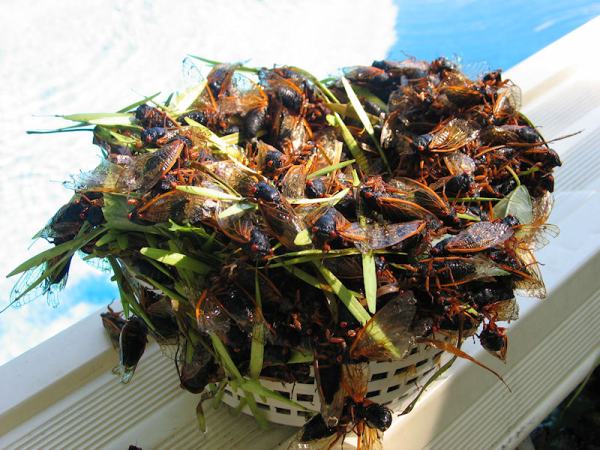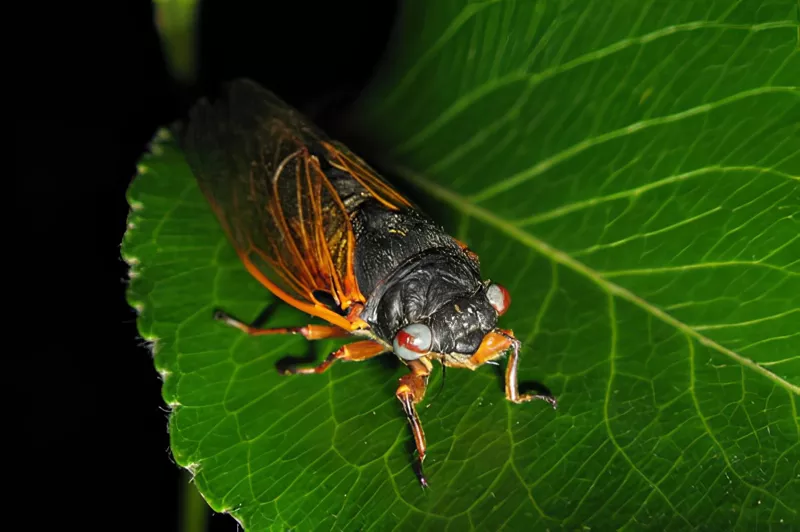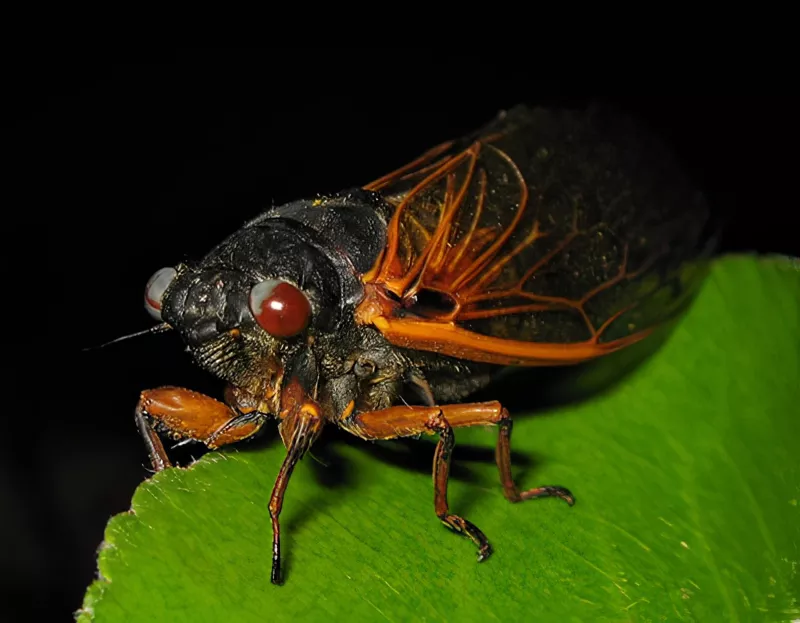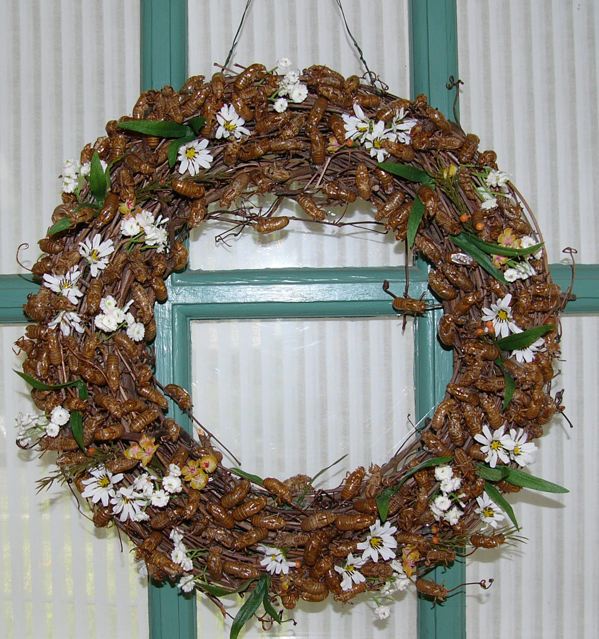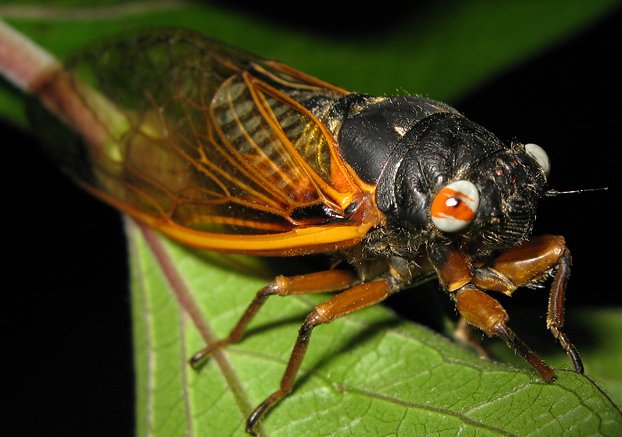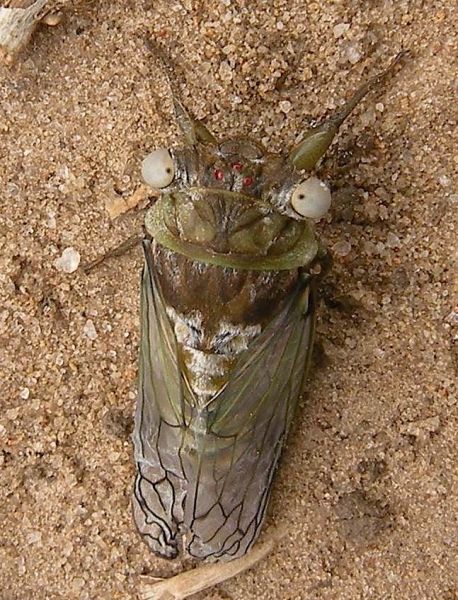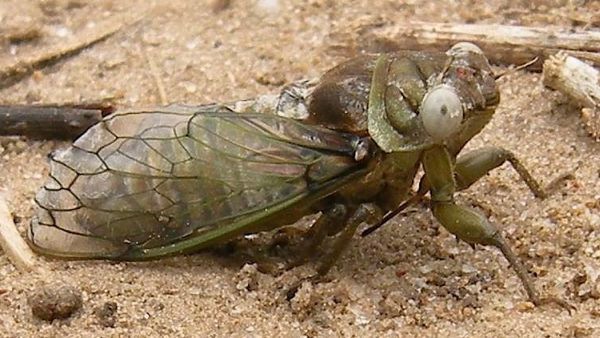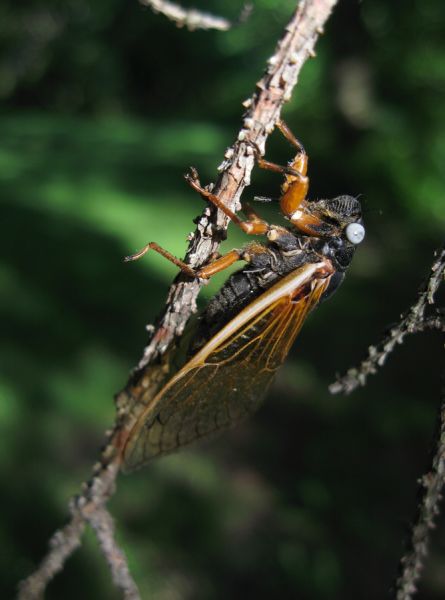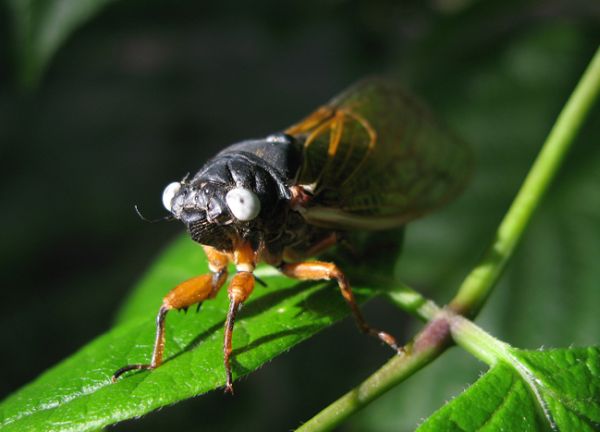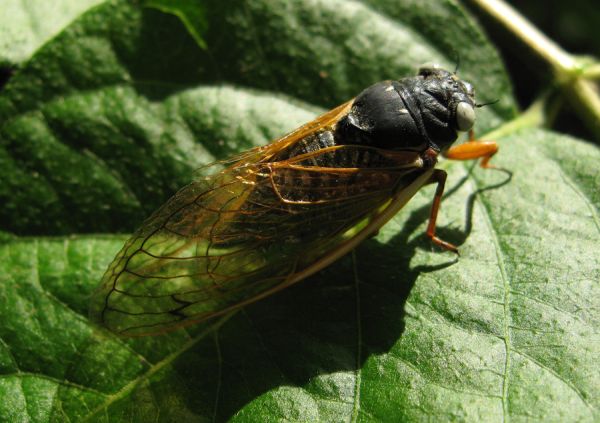Here is a question we often get: “what is the purpose of cicadas?” It can be a loaded question, but I believe people just want a concrete answer to justify the magnitude of the unusual (why only once every 17 years, why so many) or annoying (inconvenience, noise, ornamental tree damage) aspects of the 17-year cicadas. Every living thing has a reason for existing, a niche to fill, a role to play, a purpose — let us consider how cicadas fit it to the big picture.
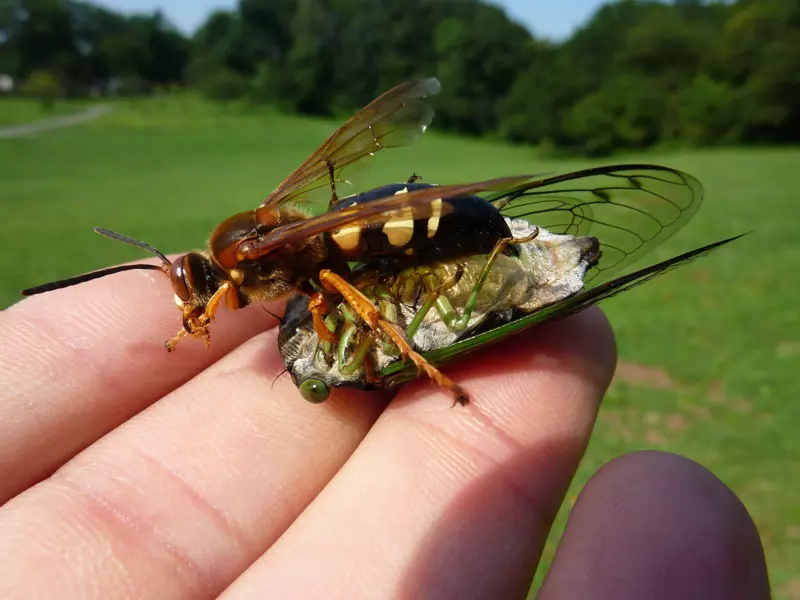
It helps to consider perspective when considering the purpose of a cicada. I will break their purpose down into four groups, for this: critters, fungi, trees, and people. Critters first because their relationship with cicadas is the easiest to explain.
The cicada’s purpose in terms of critters that eat them:
Cicadas provide a link in the food chain between trees and critters, which I’ll define as any animal that will eat a cicada. Critters love cicadas, and a 17-year cicada emergence is the single greatest feast of their lives. It is like 17 years of Christmas, Thanksgiving, and birthday parties rolled into one incredible month.
Trees feed off the sun and nutrients in the soil, cicadas feed off the trees, critters eat cicadas, and alpha predators (wolves, foxes, bears, cats, game fish, people) eat critters. The massive release of food and energy that comes from a cicada emergence results in an explosion of critter populations, which in turn results in a boon for alpha predators as well.
The cicada’s purpose in terms of fungi:
I’m not a fungi expert, but I’m pretty sure fungi have a grand time digesting dead cicadas once they’ve died and begin to rot (I’m sure the same is true for bacteria, and microscopic critters). Fungi, of course, has become another link in the food chain.
There is one fungus, the Massospora cicadina fungus, that really loves cicadas. The Massospora cicadina spreads via cicada mating and destroys the cicadas entire abdomen in a matter of days. If you’re a Massospora cicadina, from your perspective, the cicada’s purpose is to provide you with nourishment and a home. Gruesome, but true.
The cicada’s purpose in terms of trees:
Periodical cicadas are parasites of trees, more specifically of deciduous trees (leaves fall off in the fall) native to the region in which the periodical cicadas exist (maples, oaks, ash, etc.). The term parasite has negative connotations, but in the grand scheme of things, parasites can benefit their hosts, or other species by keeping their hosts in check.
Cicadas provide trees with a service by pruning the weak branches of a tree. Cicadas lay eggs in the branch, weak branches wither and die (“flagging”), and the tree benefits from that by not having to waste energy on a weak or diseased branch.
Cicadas also do the trees a service by dying and releasing a vast amount of nutrients back into the soil. When the cicadas die, it’s like dumping bags of fertilizer around the roots of the trees. The extra nutrients should result in a spurt in tree growth and seed production the following spring, which would result in an increase in tree populations (and acorns, which critters love to eat).
A small percentage of small, weak trees will die during each emergence, particularly non-native species (like imported ornamentals). This can be frustrating for people concerned with the landscaping on their property, but in terms of trees in general, it is not as bad as it seems. The fertilizing and pruning will benefit the older trees in such a way that will encourage them to produce more seeds the following year. Any loss of trees will be balanced by gains in the following years. Also, cicadas may do native trees a favor by weakening or killing non-native ornamental trees, which compete for the native tree’s food.
The cicada’s purpose in terms of people:
Cicadas are a food source. Many people around the world eat cicadas, and not just “on a dare,” but as a delicacy or staple food. Cicadas have made more than one appearance on Bizarre Foods with Andrew Zimmern for instance. Native American peoples also ate cicadas too — and in at least one case it kept a tribe alive during hard times. In most places, though, cicadas are not a sustainable found source, so insectivore gourmets should rely on easily farmable insects like crickets, waxworms, and mealworms.
Cicadas provide people with a job. Those people include professors and researchers like Gene Kritsky or John Cooley, scientists, and landscapers.
Cicadas provide people, including me, with a hobby. There are a lot worse things you can do with your time.
Cicadas provide artists and musicians with inspiration. There are bands and albums named after cicadas, and many songs inspired by cicadas.
Cicadas defending America? Could be. The Navy is researching cicadas according to the Massachusetts Cicadas site.
Cicadas provide memories. If you think about it, we people don’t have all that many milestone experiences in our lives: we have our first day at school, graduations, we get our first car, weddings, we buy your first house, children are born, loved ones pass away, special vacations, and maybe we experience a flood, fire or other unfortunate but remarkable events. A periodical cicada emergence is remarkable because it not only places a memorable milestone in the timeline of our lives, it places a series of them; a series of milestones, 17 years apart, and not only within our lives, but linking our historical timelines to the timelines of your children, and grandchildren. Gene Kritsky calls cicadas the insects of history, and I think you can understand why.
Recently, cicadas were discovered to have microscopic structures on their wings that destroy bacteria. This is discovery is being used to inspire medical advancements, such as antibacterial cornea replacements. Amazing.
Some papers on this topic, and other scientific uses for cicada wings and skins:
- Molecular and Topographical Organization: Influence on Cicada Wing Wettability and Bactericidal Properties
- Gold coated Cicada wings: Anti-reflective micro-environment for plasmonic enhancement of fluorescence from upconversion nanoparticles.
- Oxygen/phosphorus co-doped porous carbon from cicada slough as high-performance electrode material for supercapacitors
- Cicada slough-derived heteroatom incorporated porous carbon for supercapacitor: Ultra-high gravimetric capacitance
- Gradient wetting state on cicada wing surface and rapid fabrication of its nanostructure with hydrophobicity and antireflectivity on polystyrene surface.
- Extraction of high thermally stable and nanofibrous chitin from Cicada (Cicadoidea).
Cicadas can also be used to gauge soil pollution, as they spend most of their life in the soil they absorb the chemicals introduced into the soil from human pollution.


